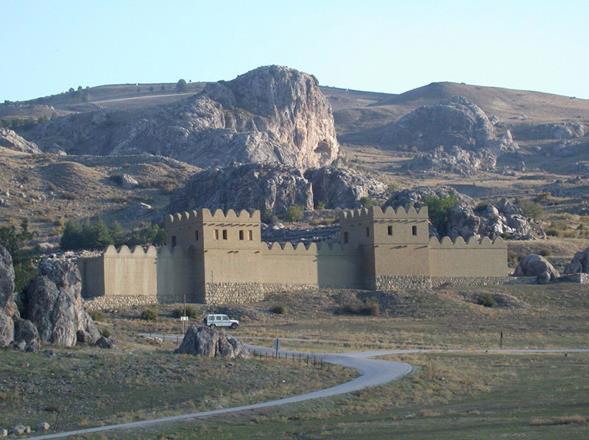
Delving Into Societal Collapse Of Late Bronze Age
It was sudden, violent and culturally regressive for many Bronze Age civilisations, and it brought a sharp economic decline to regional powers. Scholars have argued what were the causes for a collapse and different theories have been proposed since 19th century.
The most common are volcanic eruptions, droughts, disease, invasions by the Sea Peoples or migrations of the Dorians, economic disruptions due to increased ironworking, and changes in military technology and strategy that brought the decline of chariot warfare.
According to German historian Arnold Heeren, who lived in 19th century, the collapse of the Bronze Age should be dated around 1,200 BC. That year was a key moment when Trojan War took place. Also, it was the end of the Egyptian 19th dynasty.
Extensive trade network, olive oil and olive commerce, sophisticated socio-political institutions and monumental architecture characterised the Late Bronze Age (1,500-1,200 BC).
Advanced civilisations with extensive trade networks and complex socio-political institutions characterised the Late Bronze Age (c. 1550 – 1200 BC).
Hittites, Mycenaeans, Egyptians, Mesopotamians and Mynoan flourished during the Bronze Age. Timber, pottery, copper and agricultural produce were exchanged between these commercial hubs. The commerce boosted the interconnectedness between these cultures and they had a centralised bureaucracy. The economy revolved around the palace with ruler and his aristocracy on the top of strata.
"When the Mycenaeans expanded in the Eastern Mediterranean, they found Cyprus occupying a strategic position in the sea routes between Greece and the Near East; they took advantage of it and, and early as the 14th century BC, they started establishing entrepôt stations in Cyprus that facilitated their commercial interactions with the Near East," said a former rector of the European University Cyprus and historian Andreas G. Orphanides.
In his works, Orphanides dealt with history, archaeology and anthropology of Cyprus and its relations with Southern Levant.
In the meantime, equally important thing led them to pay more attention to the island, to gradually dominate over it, to achieve control over its territory, and to consequently Hellenise it, the historian said, adding that it was the fact that Cyprus was one of the most important copper sources in the Mediterranean.
"The discovery by the Mycenaeans that a resource as valuable as copper was readily available on the island increased its importance considerably. Timber, as the main material for ship building, was obviously another important resource for them on the island," Orphanides underlined.
The causes for the disturbance of the established order were different from the invasion of the Sea Peoples to the spread of iron metallurgy, military developments and pandemics.
Joseph Tainter suggests that societal collapse results from an increase in social complexity beyond a sustainable level, leading people to revert to simpler ways of life. We have that trend in post-Mycenaean Greece, when big urban centres were destroyed and people opted to live in the countryside.
The critical flaws of the Late Bronze Age (its centralisation, specialisation, complexity, and top-heavy political structure) were exposed by socio-political events (revolt of peasantry and defection of mercenaries), fragility of all kingdoms (Mycenaean, Hittite, Ugaritic, and Egyptian), demographic crises (overpopulation), and wars between states.
In the Levant, Egyptian evidence shows that from the reign of Horemheb (ruled either 1,319 or 1,306 to 1,292), wandering Shasu were more problematic than the earlier Apiru. Ramesses II (ruled 1,279–1,213) campaigned against them, pursuing them as far as Moab, where he established a fortress, after a near defeat at the Battle of Kadesh.
During the reign of Merneptah, the Shasu threatened the "Way of Horus" north from Gaza. Evidence shows that Deir Alla (Succoth) was destroyed, likely by an earthquake, after the reign of Queen Twosret (r. 1191–1189) though the date of this destruction appears to be much later dating to roughly 1150.
There is little evidence that any major city or settlement in the southern Levant was destroyed around 1,200.
"Climate change represented by cooling and drying of the environment throughout of the Levant was attributed to bringing about the end of the Late Bronze Age," said Jesse Millek from The Leiden University, adding that the drought for a longer period brings stress to the palace and rigid economic systems.
The potential of climate change to substantially alter human history is a pressing concern, but the specific effects of different types of climate change remain unknown.
"This question can be addressed using palaeo-climatic and archaeological data. However, the precise details of synchronised climate and human-history-scale associations are lacking.
The archaeological–historical record contains multiple instances of human societies successfully adapting to low-frequency climate change," said Sturt Manning, adding that it is likely that consecutive multi-year occurrences of rare, unexpected extreme climatic events may push a population beyond adaptation and centuries-old resilience practices.
Most likely the Hittite Empire around 1,200 bc collapse. The Hittites were one of the great powers in the ancient world across five centuries with an empire centred in a semi-arid region in Anatolia with political and socioeconomic interconnections throughout the ancient Near East and Eastern Mediterranean, which for a long time proved resilient despite facing regular and intersecting socio-political, economic and environmental challenges.
However, the dynamic changes proved again too much for the Hittites and they disappeared from the historical maps.

Legal Disclaimer:
MENAFN provides the
information “as is” without warranty of any kind. We do not accept
any responsibility or liability for the accuracy, content, images,
videos, licenses, completeness, legality, or reliability of the information
contained in this article. If you have any complaints or copyright
issues related to this article, kindly contact the provider above.


















Comments
No comment